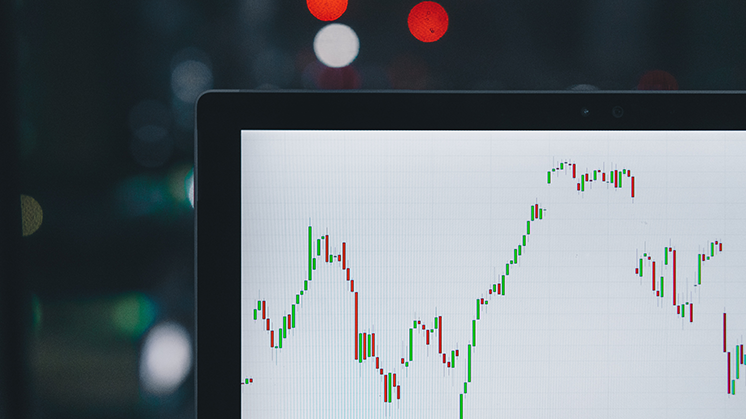
Actively managed credit portfolios could play an important role in coming years as rising rates and tightening central bank liquidity bring volatility to debt markets, says Perpetual’s Vivek Prabhu.
The US Federal Reserve is rapidly withdrawing economic support provided during the pandemic and plans to remove the equivalent of US$95 billion a month in liquidity over the next year.
“This quantitative tightening is the biggest withdrawal of liquidity from global financial markets in history,” says Vivek Prabhu, Perpetual’s head of fixed income.
Tighter liquidity is already triggering volatility in markets and could represent the single biggest risk to all asset classes, says Prabhu.
“Prior to the pandemic, the Fed's balance sheet was US$4 trillion. Prior to the GFC, it was less than $US1 trillion. After the pandemic, that balance sheet peaked at US$9 trillion in June last year.
“They commenced quantitative tightening in June last year at a rate of US$47.5 billion per month of bonds that they would allow to mature without being reinvested.
“In September 2022, it accelerated to US$95 billion per month and it's been on autopilot ever since.”
Prabhu believes the speed and magnitude of this liquidity withdrawal heightens the potential for elevated market volatility, price-gapping risk (the risk that a security’s price falls significantly from one trade to the next) and liquidity risk.
He argues investors should consider moving their fixed income exposure to actively-managed, high-quality assets.
Volatility can bring opportunity
When the Fed began quantitative tightening, defensive positioning in Perpetual’s Diversified Income Fund allowed Prabhu and his team to monetise changes in market risk premiums during three episodes of volatility.
The first was in September last year when then British Prime Minister Liz Truss announced expansionary fiscal policies that sparked panic in bond markets and forced a rescue from the Bank of England.
“UK pension funds had to fund margin calls on some of their derivative positions as a result of the spike in bond yields and sold a lot of assets, including selling $1.3 billion of Australian dollar RMBS below the prevailing market price.
“We successfully bid for about $130 million of these bonds, monetising the liquidity premium (discount to market price) for investors in the fund from a forced seller.”
The second example was last year’s Bank of Japan move to step away from easy monetary policy for the first time in two decades, which sent global bond yields spiking.
“On the day, we took the opportunity to add duration to the portfolio as bond yields spiked higher, closing this position the following month for profit as yields settled lower,” said Prabhu.
The third was March’s collapse of Silicon Valley Bank and Credit Suisse, which we actively traded using credit default swaps monetising the elevated market volatility as credit risk premiums rapidly repriced during these events.
“This environment of central banks hiking rates aggressively into a slowing global economy, presents a significant headwind for risk assets.
“At this part of the economic cycle it can be prudent to rotate into higher quality assets.”
Be active in credit
Active credit managers can take advantage of price fluctuations and relative value between different types of credit, argues Prabhu.
“Why do you need to be active in credit? Credit premiums change over time. Right now, credit premiums are pretty close to decade-long averages, whereas throughout 2021 they were at post GFC lows.
“At that time, credit spreads weren't so attractive, and neither were interest rates because the RBA had record low cash rates.
“The yield on an Australian floating rate credit fund is a function of two things – the RBA cash rate and credit premiums.
“Today, the RBA cash rate is 4.1 per cent and credit premiums are almost double where they were back in 2021.
“This illustrates why credit needs to be actively managed.”
Be ready to take advantage
Prabhu says he is holding a higher-than-usual allocation to cash and government bonds to be ready to take advantage of heightened volatility.
“The other way I’ve responded is by holding shorter-dated bonds. The price sensitivity of the assets held in the fund to changes in credit risk premiums is driven by the average maturity of the bonds in the portfolio and I've dialled that right down.”
There are also active management opportunities arising from differences between Australian and foreign denominated bonds, believes Prabhu.
In early 2020, credit premiums for Australian major bank senior bonds rose from 1 per cent to about 1.5 per cent as markets weighed the risks COVID would pose to the global economy.
“But for the same banks’ foreign-denominated bonds, credit premiums rose to nearly 3 per cent.
“So, for the exact same credit risk, I could buy the foreign-denominated bonds and get double the credit yield premium,” says Prabhu.
“Because credit is a global market, we're able to take advantage of these mispricings between different regions.
“Importantly, we don't take currency risk — all of those foreign-denominated bonds are hedged.”
About Perpetual’s Credit and Fixed Income team
Perpetual offers a range of cash, credit and fixed-income solutions and are specialists in investing in quality debt.
We take a highly active approach to buying and selling credit and fixed income securities and invest extensively across industries, maturities and the capital structure.
Find out more about Perpetual’s Credit and Fixed Income capabilities
Want to find out more? Contact a Perpetual account manager
